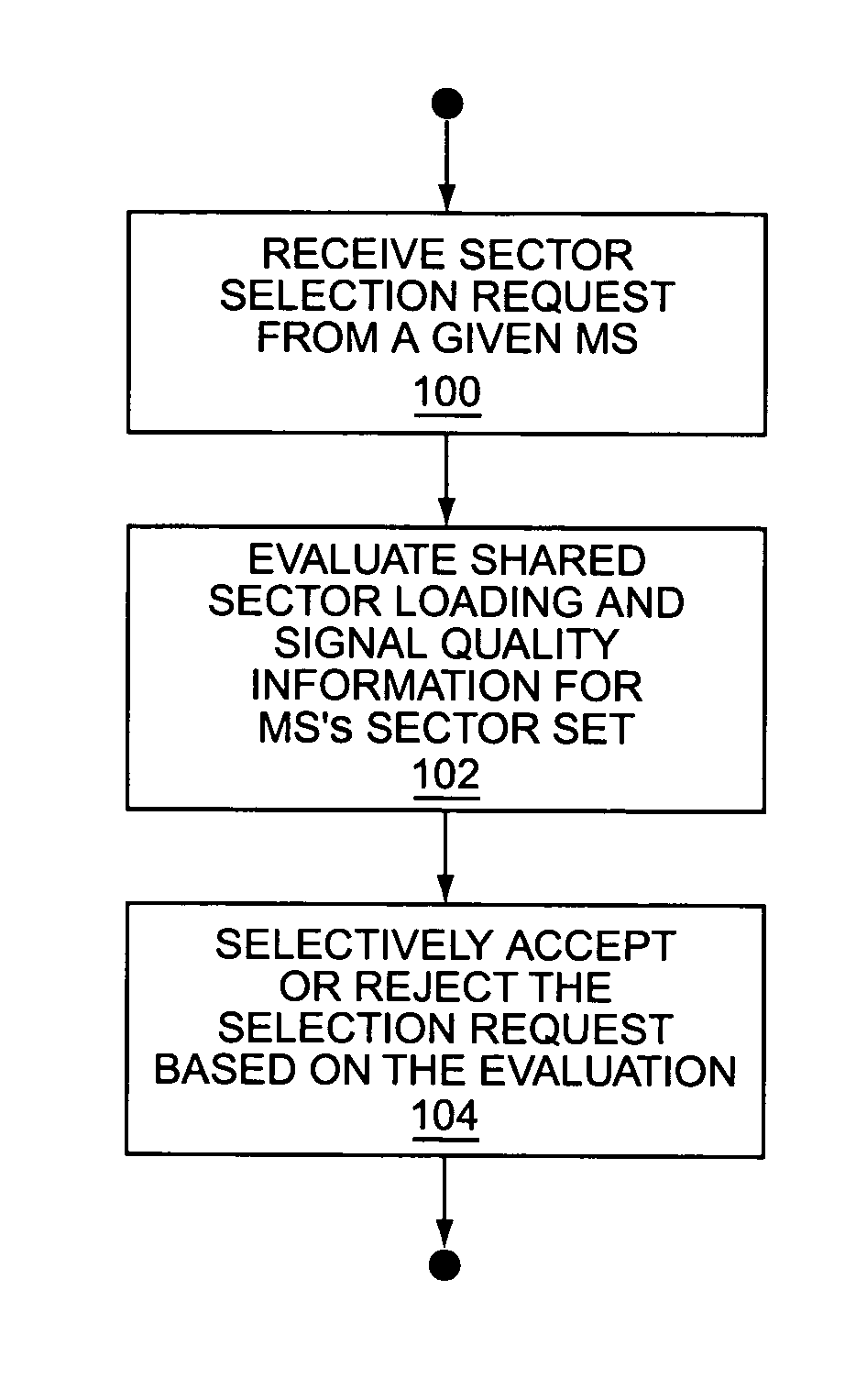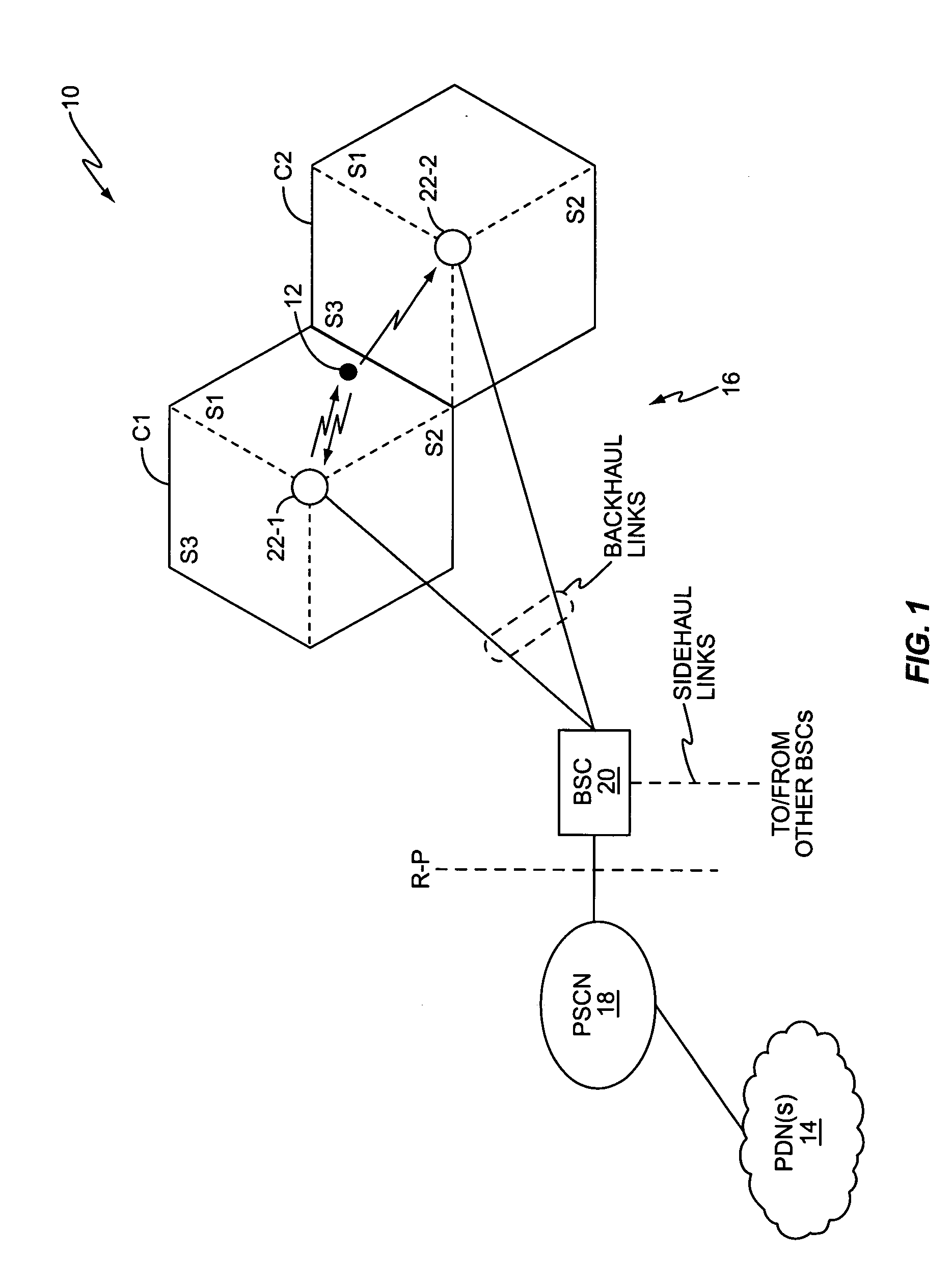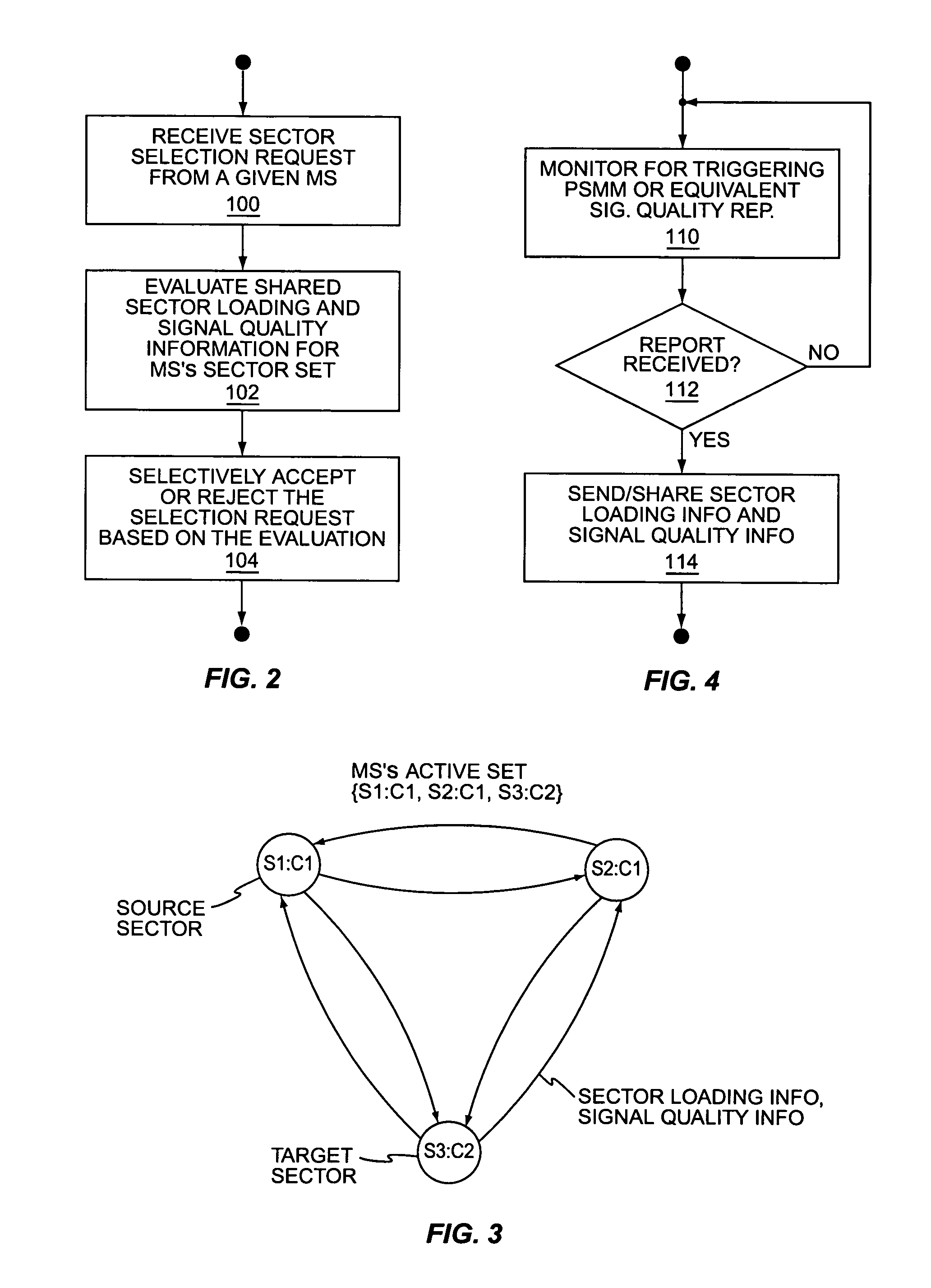Method and apparatus for mobile station-assisted load balancing in wireless packet data networks
a wireless packet data and load balancing technology, applied in the field of wireless communication networks, can solve the problems of not always the best f-pdch serving sector, reduce the transmit power and spread code availability of f-pdch, and the support wireless packet data network is vulnerable to potentially significant congestion and efficiency problems
- Summary
- Abstract
- Description
- Claims
- Application Information
AI Technical Summary
Benefits of technology
Problems solved by technology
Method used
Image
Examples
Embodiment Construction
[0026]FIG. 1 illustrates a wireless communication network 10 that communicatively couples mobile stations 12 to one or more Public Data Networks (PDNs) 14, such as the Internet. The illustrated network 10 comprises a Radio Access Network (RAN) 16 coupled to a Packet Switched Core Network (PSCN) 18 through a Radio-Packet (R-P) interface. RAN 16 comprises one or more Base Station Controllers (BSCs) 20, each supporting one or more sectorized Radio Base Stations (RBSs) 22, also referred to as “Base Transceiver Stations” (BTSs). Those skilled in the art will appreciate that network 10 may comprise additional entities not illustrated, such as location registration servers, authentication servers, etc. Also, it should be understood that a reduced number of BSCs 20, RBSs 22, and mobile stations 12 are illustrated for simplicity.
[0027] Network 10 can be configured according to any number of wireless communication standards, although the present invention contemplates particular applicabilit...
PUM
 Login to View More
Login to View More Abstract
Description
Claims
Application Information
 Login to View More
Login to View More - R&D
- Intellectual Property
- Life Sciences
- Materials
- Tech Scout
- Unparalleled Data Quality
- Higher Quality Content
- 60% Fewer Hallucinations
Browse by: Latest US Patents, China's latest patents, Technical Efficacy Thesaurus, Application Domain, Technology Topic, Popular Technical Reports.
© 2025 PatSnap. All rights reserved.Legal|Privacy policy|Modern Slavery Act Transparency Statement|Sitemap|About US| Contact US: help@patsnap.com



